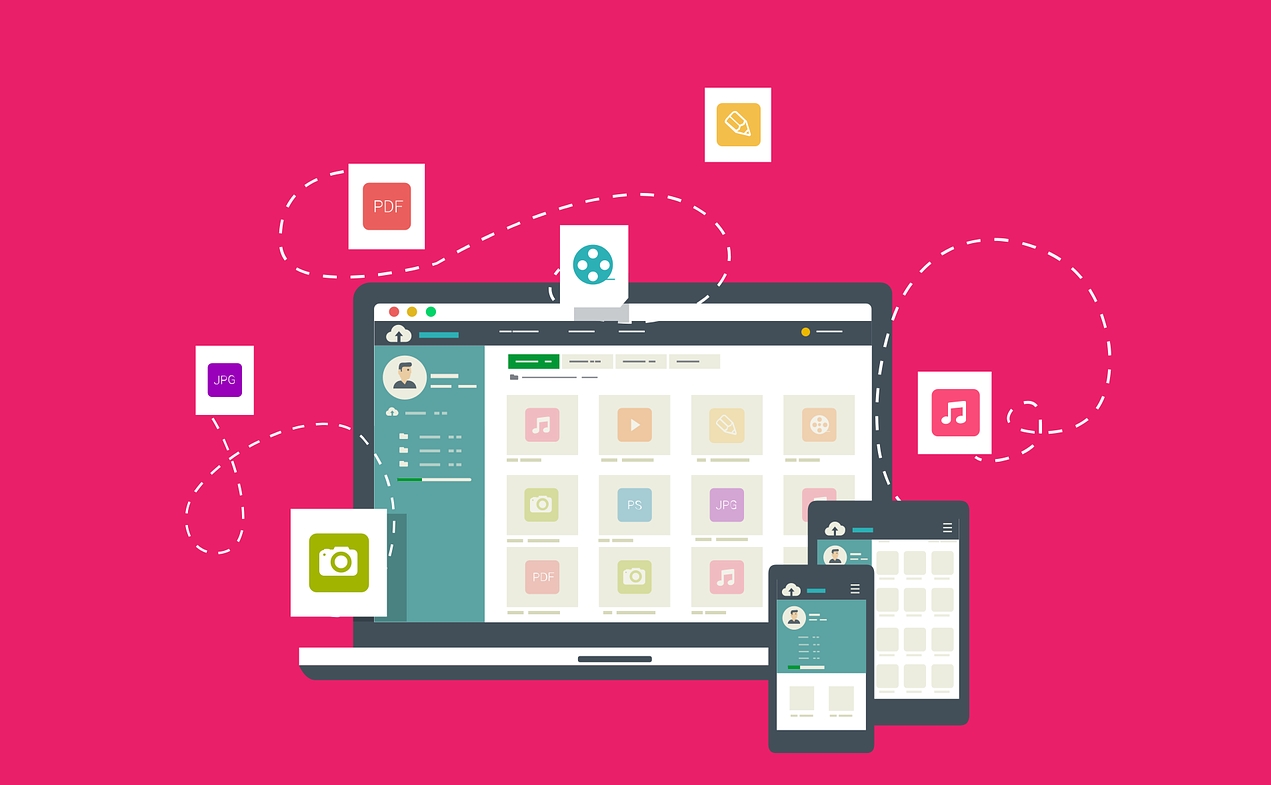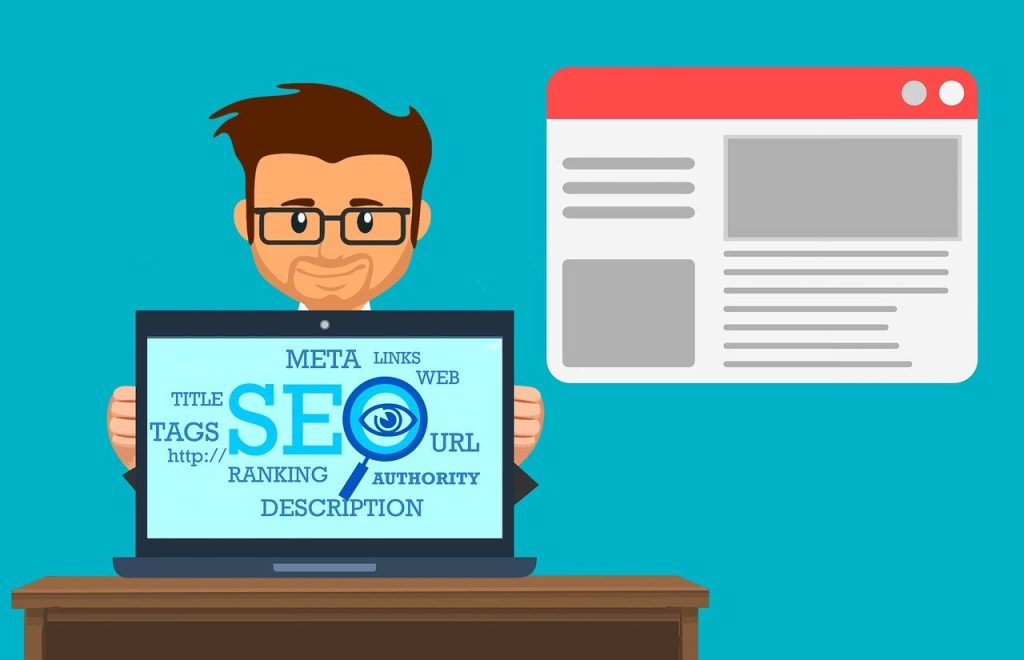Always wanted to start a website? If didn’t started one before here is how you can start a website this year. Basically starting a website in 2024 it is same as was in the last year 🙂
You’ll need to have at least one of these before starting:
- An idea
- A product
- A service
- Have a business
- Have a social media audience (read: followers)
- Just want to show off
If have none of the above choose some, work on it and then get back and proceed with reading.
Everything you need to know how to start a website this year is inside. Don’t worry it’s not so hard.
 Define Your Purpose and Audience
Define Your Purpose and Audience
First of all and most important is to determine the purpose of your website (e.g., blog, portfolio, e-commerce) and who your target audience is. If you are active on social media and already have a number of people that follow what you are posting there it is a good start already and you can start form there. A website will be your home place for your posts and social media are great way to drive audience to your place and get more visitors.
Visitors and views are the currency on the Internet
Choose a name and then choose a Domain Name
To distinguish yourself and your site in the galaxy of websites out there, you’ll have to choose a name for your website.
Ideally it has to be short, easy to read and easy to memorize. Same applies for the website domain and its logo.
Ads by: ⓘ Random Ads
If have no idea ask AI at Looka.com or similar site to get ideas. It will generate suggestions based on your input including a name, slogan, logo and more. This is great for a start. You can buy if you like or just use the suggestions to create something really unique and truly yours but be sure to check if the domain name is available first. Running a website on a free subdomain is not suggested.
Domain name has to be as short as possible, letters only and meaningful. Would be perfect if the domain name is same with the preferred name of your future site, contains the word/s (keyword) or the slogan in whole or at least suggest what your site (and its name) is about.
If you find a domain that fits and it is not already taken go and register it before somebody else does. If it is taken or cost to much will have to pick another name for your site and run the search for appropriate domain once again.
Domain name has to be relevant to your website name
Go with the .com DNS prefix. If running a local business or selling physical products in your country only, may go with that country prefix instead (eg. .CA .MX .IN .UK etc). If your website is an online portfolio may consider yourname.NAME domain prefix. All other domain prefixes may not perform as well as .COM.
Usually you can buy hosting together with a domain (or get a free domain registered when buying a more expensive hosting plan) but its a good idea to register your domain at one company and host somewhere else (in case you decide to change the hosting later).
Hosting is the place where your website and its files are
Select a Web Hosting Provider
You can use a free hosting and it can be pretty good actually but you may be cut from some options, customizations and usability. That’s the con of the free hosting. If on low budget or building a simple landing page or a portfolio website may look for free hosting and similar free services. For example, for static sites may check Google sites as it is completely free or paid alternatives if looking for a better visual appeal.
If plan to run an online store you might check options like Shopify, PayHip or Etsy instead of buying and setting your own online store yourself, or even don’t need hosting at all if selling a handful of products on social media.
For blogs and business websites you’ll have to go with paid hosting.

Have to research and choose a reliable web hosting provider that meets your needs in terms of performance, reliability, scalability and support.
Ads by: ⓘ Random Ads
There are so many hosting companies that is hard to choose. A popular one or the more expensive is not always the best. Smaller companies sometimes offer better service.
In terms of price/performance you may want to start with a cheapest hosting option and upgrade later.
- Shared hosting. Cheapest of all (and slowest). Resources are shared with hundreds of other sites. Prices vary about 3$-5$ a month (sometimes lower). Good for landing pages, simple websites, portfolios and blogs. Usually runs on Linux and comes with CPANEL where you can set emails for your site with @yourdomain.com, manage databases, set subdomains, built in analytics, install any web script including WordPress and start running your new website.
- WordPress hosting. This is what you need in most cases. Optimized for blogs running WordPress. It can be already preinstalled on the time of purchase or you can install it from the Cpanel yourself. A bit more expensive then shared hosting. Price depends of features and number of allowed sites running on the same plan ranging from 3 – 15$. Be sure it comes with unlimited storage/bandwidth, cashing and some extras.
- VPS hosting. Stands for Virtual Private Server. It is far better, more secure, faster and more expensive. Comes as managed where hosting company takes care of all technical setups or unmanaged where the setup is carried out by the website owner, including OS configuration, server setup, and update installation which can be overwhelming. While unmanaged VPS may be cheap, managed VPS is quite expensive starting from >20$ a month at least.
- Cloud hosting. Your website data and files are stored on several locations worldwide and loaded from the nearest to load much faster then previous. Not needed for blogs and most sites unless your website have much traffic and visitors or running a service. Prices vary depending of resources and locations you want to include in your server s list.
- Dedicated hosting. Also called bare metal hosting because you buy a physical machine to host your website. The server is made of metal and your site is in it. Pricey!
Choose a Content Management System (CMS)
WordPress is generally most versatile and most used of all. Easy to customize through themes and plugins but they came with a cost. Other CMSs (Jomla, Drupal) came with similar functionalities and general use, some are specialized for forums, online stores, user management, ticket support etc.
If looking for a free alternative to WordPress check Blogspot.com. It is runed by Google or use the free hosted WordPress.com. Unfortunately both came with a limitation of some kind.
Design Your Website
You don’t need to design your website. It’s already done.
Once wordpress is installed go to the dashboard-appearance and choose a theme or Add a new one. There are more then 6250 themes in the time of writing. Choosing a right theme is not easy. Most themes are free to use but have to pay to be able customize functionality, its look and feel exactly as you want.
Not all themes are the same
When looking for a wordpress theme it is important to see it in action. Some are so badly coded with a lot of bloat code, broken functionality, incorrect positioning, bad fonts and are totally not SEO friendly. It is strange that so many themes don’t even have proper header tag for a post title!
If need additional functionality use plugins. There is a plugin for everything you can think of ranging for those that enhance the look and feel, add additional functionalities, improve security, speed, make backups etc.
In order not to slow down your website try to minimize the numbers of plugins in use to just the necessary few: cashing, SEO and security. In practice you’ll need at least 5 more 🙁
For static sites and other CMSs there is not so much customizations (nor add-ons) available. You’ll need coding skills to change something trivial like a font size or a button image.
You can always hire somebody to do the work for you on freelance sites like Upwork, Freelancer or Fiverr.

Create Content
Once set up and running you’ll need to add content to your new website. While a few images and social proof, together with a product description and an opt-in form are enough for a landing page, a more professional website needs more.
Have to develop high-quality content that engages your audience and provides value
This especially concerns you if your website is a blog. Have to post regularly. More often in the beginning and by more often I mean 2-3 times a day (if possible). Content should not consist of text only. Should include images, videos and other multimedia elements like animations, emojis, audio, infographics …
Creating content is time consuming and if you have a writer block and no idea what to do next your blog is doomed. Sooner or later without motivation, lack of proper monetization for your effort to keep you running, you’ll stop posting new content, lose your audience and your website is doomed.
Fortunately with the raise of AI, some tools are here to help, some are even free to use (more or less). Trick is to:
Create a blogging strategy, stay organized and do all the tasks in your daily routine.
Optimize for SEO
Implement search engine optimization (SEO) strategies to improve your website’s visibility in search engine results.
First of all make sure the theme you are using is SEO friendly. Can check your SEO score online to determine your current SEO score results and suggestions how to improve. If there are many errors, try using another theme, run the check again and continue using one with less technical issues.

Some of the technicalities like the website slow loading speed may be caused by the theme or the hosting provider. Changing theme could solve the issue or try using a caching plugin. In worst case scenario upgrade the hosting plan or change the hosting company. Don’t forget to make a back up before doing so. there are plugins for that.
If have problems with missing H1, H2, meta tags, keywords, alt tags for images and other page elements, check your content and identify the issues and try to fix them. If not, change the theme.
Changing content is not good for SEO, so whatever you do it is better to do it on the start when have less content.
It is easier to fix a few posts then few hundreds
When done, install and use a SEO plugin like Yoast SEO or All In One SEO (AIO SEO). Just one plugin for its purpose! Both are good and will help you write and optimize the content.
You may chose not to use any at all. Instead you can install wordpress locally on your computer install the same theme and plugins you’re using on your live website and test it there.
Can create and write locally test your keywords and meta with Yoast and when finished writing and satisfied with it just copy and paste into your live website running online.
But, SEO is more then that
Have to do SEO research. Find the right keywords and incorporate into your content. This is valid both for text, images and videos. Keywords, meta-descriptions and alt tags together with naming convention for files are just part of the SEO, and SEO itself is just the free part of SEM (Search Engine Marketing).
There are many tasks to be done for a successful SEO
Backlink building is the pillar of SEO. How you do it is up to you. Be aware that not all links are equal. Everybody says it is the quality that matters but assume that you need a quantity also.
Always use HTTPS instead of nonsecure HTTP hypertext transfer protocol.
Use webmaster tools (or how do they call it nowdays) to set a preferred version of your website to be shown -the one with HTTPS
May choose to install Google analytics (if it is still called GA) or use something else like a visitors counter or a third party plugin to track views and visitors together with location, bounce rate and time spend on your website.
Ensure that your website is mobile-friendly and responsive and looks nice on different screen sizes and devices. I’m quite sure your theme is responsive by default. If not, change it.
Don’t rely on SEO only

Promote Your Website
While SEO is great for getting visitors on a long term if done properly, using social media give immediate result after a share button is pressed.
Incorporating social media in your promotion strategy is very important. Many themes have share buttons incorporated by default. If not, find and install appropriate plugin or use a service like Disqus.
If already have some presence built on some of the 500+ social media out there, the only thing is to share or repurpose your existing website content. Use an image or an excerpt, a paragraph or 2 are enough for posting on Facebook or Twitter/X. Different story on TikTok and Instagram.
Keep an eye on new emerging social media
Telegram, Discord and few others may have the potential to replace some of the now widely popular networks.
Don’t forget e-mail marketing. While everybody hates them, mail collectors, subscribe now, opt-in forms of every kinds and sizes are widely used to collect visitors email addresses, add them to a mailing list and use them to promote every piece of future new content published.
Similar story with not so obtrusive but not so SEO friendly content lockers. (We have few on this website BTW).
Create a SEM strategy, set a budget and run paid marketing campaigns (if can afford it). Facebook was a good place for this.
Don’t forget offline channels.
Update Regularly your newly started website
This doesn’t mean updating your existing website content. Can do this once in 6 months if there are misspellings, not satisfied with a paragraph or if want to change the focus keywords. But don’t do it more often.
Regularly add new content. That is what is meant.
No matter how hard is to start a website and how even harder is run one, keep going.
This is how to start a website. It worth the effort!